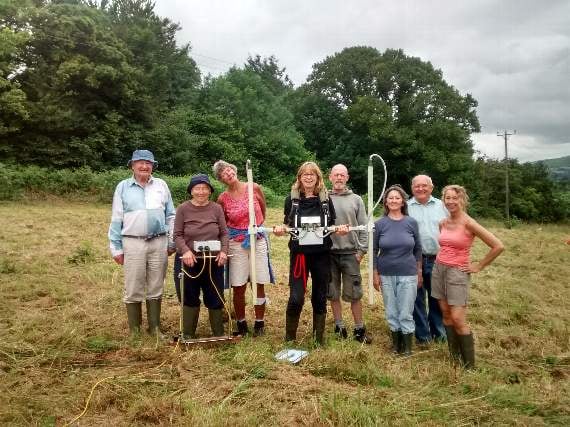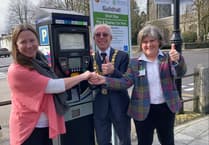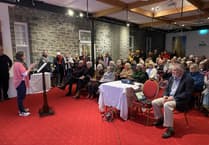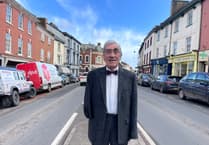AN archaeological survey undertaken at Mount Kelly shows ‘exciting’ evidence of two prehistoric round houses at the earliest settlement known in Tavistock.
The news of the findings has not only enthused local historians but means that more information can be gained about these buildings right on Tavistock’s doorstep.
A geophysical survey took place over three days in July and August this year on a site known as the Trendle — a rectangular enclosure formed by a rampart and ditch — and the findings were described as ‘tantalising’.
Excavations of the Trendle’s bank and ditch in the 1960s revealed a few fragments of pottery of a type called Glastonbury Ware which date back to the late Iron Age — but a round house had not been identified until this year.
As a scheduled monument the Trendle is already nationally significant and settlements of this type, which archaeologists often refer to as ‘rounds’, are rare and mostly found on the uplands of the South West for use as a home for the prehistoric families, or, as some believe, could have been for show or even religious purposes.
The survey is part of a wider archaeology and history project about the site, sponsored by Mount Kelly and being conducted by Andrew Thompson Heritage, GeoFlow and other specialists.
Andrew Thompson, co-ordinator and project manager, said: ‘Items found in the sixties date the site to the Iron Age or very early Roman period around the first century BC and first century AD.
‘The finds are exciting because they appear to provide tantalising clues about activity at Tavistock’s oldest surviving settlement site. But they are of more than local interest. The survey contributes to wider archaeological debate about the nature of prehistoric defended settlements.
‘There is considerable debate among archaeologists about whether or not sites like this were occupied. The evidence from the Trendle is another piece of evidence to suggest that at some stage they may well have been, although whether that was permanent or temporary we cannot say.’
Tavistock Forward provided links with local community groups and assisted with recruiting and briefing volunteers. Groups, including 40 pupils from Mount Kelly, have all been involved in the project either by learning how to use equipment on site or assisting the team to conduct the survey.
Chair of Tavistock Forward John Taylor, who initiated the Trendle project, said: ‘This is really exciting news for anyone who is interested in and cares about the town’s heritage. It adds to our understanding of the origins of the oldest known settlement in Tavistock and raises a whole set of new questions about the site and how it developed.’
He continued: ‘When we established the project we all agreed that it was important that the community should be involved. We are very grateful to Mount Kelly for providing local volunteers with the chance to work on the site and to learn with the professionals. As the project develops we hope there will be more opportunities for local people to participate.’
Mark Semmence, the Headteacher at Mount Kelly, said: ‘Mount Kelly is delighted to be sponsoring this project. The Trendle is nationally significant as a scheduled monument and a vital, but little understood, part of Tavistock’s history. As the landowner for most of the site, we are very conscious of our responsibility to manage and conserve the monument so it is preserved for the future. The results of the survey will help us to work with Historic England and the county archaeologist to continue to do this effectively.
‘The survey was a wonderful opportunity for our students to experience archaeology first hand. They were interested in the science of the geophysics equipment and really excited about searching for things which have not been seen for hundreds of years. Andrew Thompson also came into the school and talked to some of our older students about the Trendle’s wider historical significance.
‘We are hoping to carry on working with him to explore its potential as a learning resource.’
The geophysics survey was part of a larger and evolving project which aims to explore the Trendle and its place in the wider landscape. It is anticipated that there will be further opportunities for the public and local schools to get involved in fieldwork.
A display about the Trendle is being prepared for display in Tavistock Museum next year and Andrew Thompson will be giving talks to the public and to interested groups about the project as it develops.




